The Aerobic Digest 3: Hexagonal composting is the future
Scroll down for a cat on a compost heap
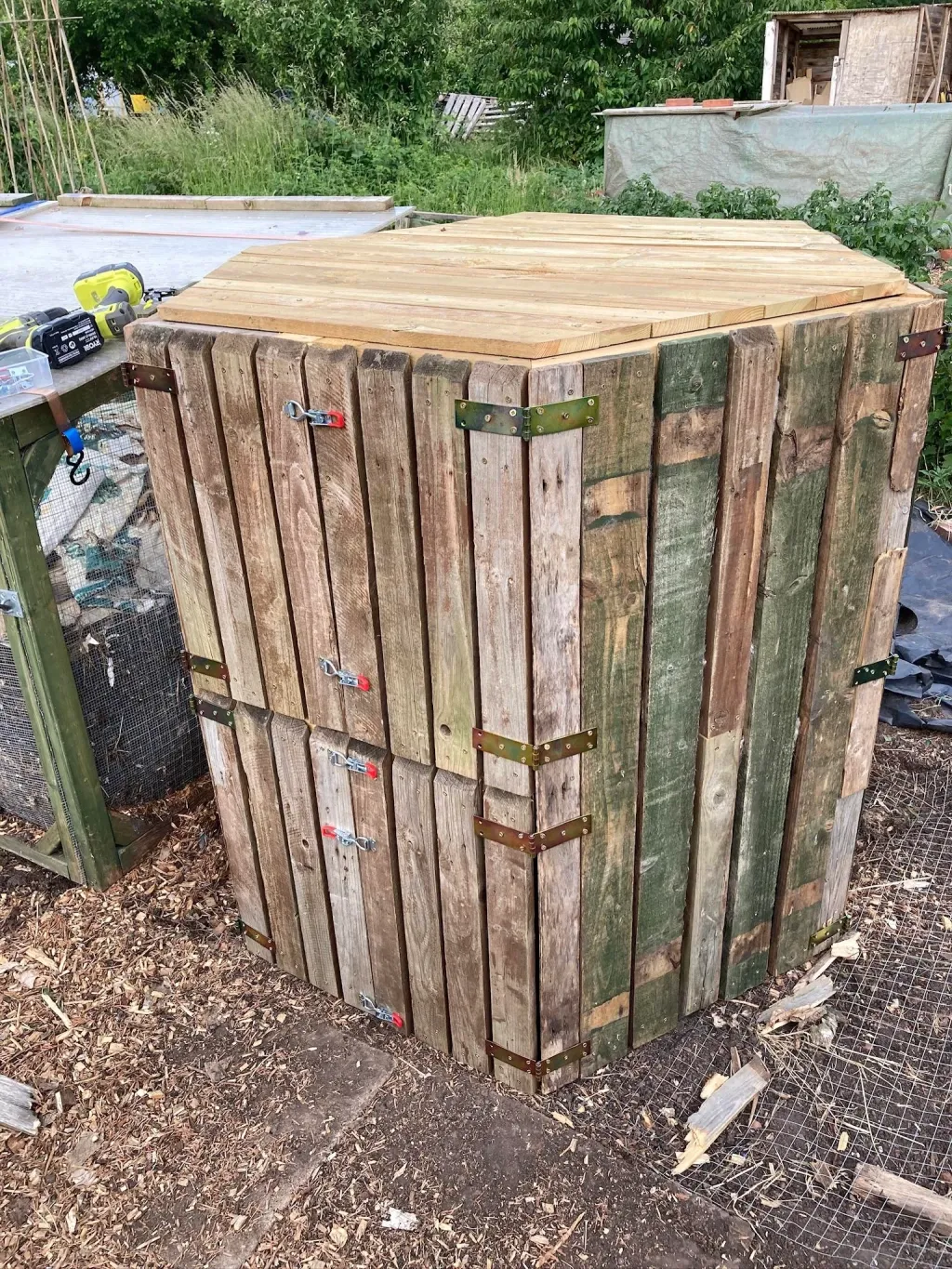
Thanks for subscribing to my weird experiment in compost newslettering. Sixty of you are getting this third email, which I visualise as a decent audience were I talking in a church hall, and I’m very happy with that.
In theory I do my composting once a week on a Sunday afternoon. In practice I don’t always have the time or energy (the long tail of Long Covid casts a long shadow) and the stinky boxes start to build up, as they have this last fortnight. This weekend I had both time and energy so got to work on what turned out to be a new pile. And because I’ve set myself a rule that I’ll only write this newsletter after a session on the allotment, I’m going to tell you about it.
Last time I’d filled the current receiving pile to the brim so it’s now formally resting for the next couple of months. This means I now have three full bays and a significant amount of material with nowhere to put it. What I should do is empty the bay with the oldest heap of presumably finished compost, but I forgot my drill – another reason to put latches on those original bays. One day I’ll re-do my own composting system with everything I’ve learned from making them for other people. But not today.
Thankfully the bay that was due to be emptied into the middle resting bay was the newer…
Hang on. This is getting confusing. Let’s see if a diagram helps.
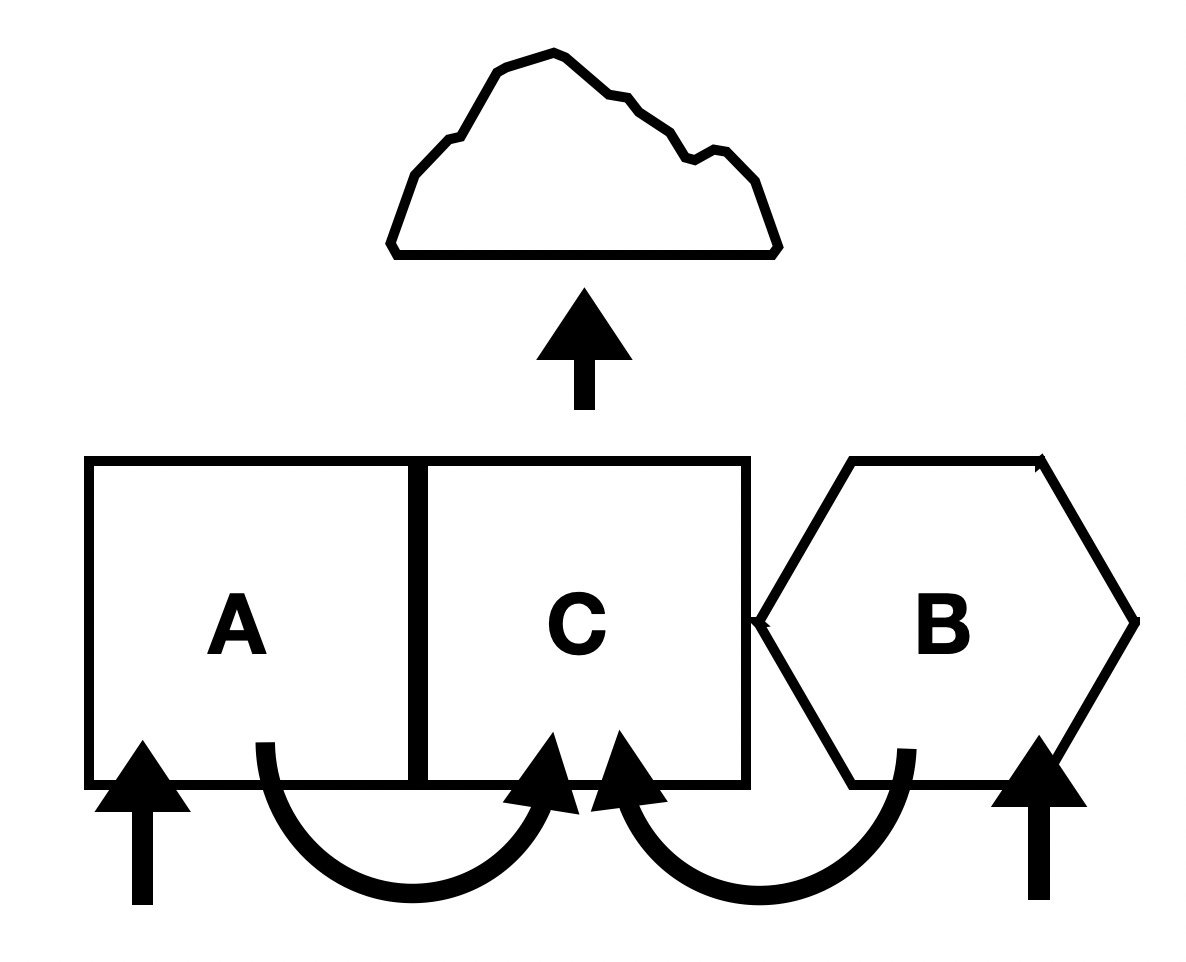
A and B are my receiving bays. Once A is filled to the top I let it rest and start filling B. It takes me at least a couple of months to fill a bay so while B is being added to, A is resting. This means I turn it in on itself once or twice to oxygenate and move the edges to the middle, but otherwise let the hot thermophilic bacteria do their thing.
Once B is full, A is ready to be decanted into C which will have settled to about half the original volume. A is now freed up to be my receiving bay again while B has a rest. Once A is full for the second time, B is now ready to decant into C, filling it to the top now.
A rests and B becomes the active receiver until all three bays are now full of compost. A is half done, C is pretty much finished and B is pretty raw. C is now emptied into the Done pile and is ready to receive A.
Make sense? Yes? Great! No? I’ll try again later. Maybe an animation is needed.
Anyway, you’ll notice that the bay B is hexagonal. This is my prototype hexagonal compost bay which I built early in the summer and which has now processed its first batch of muck. I posted it to Reddit in June and should really do a follow-up.
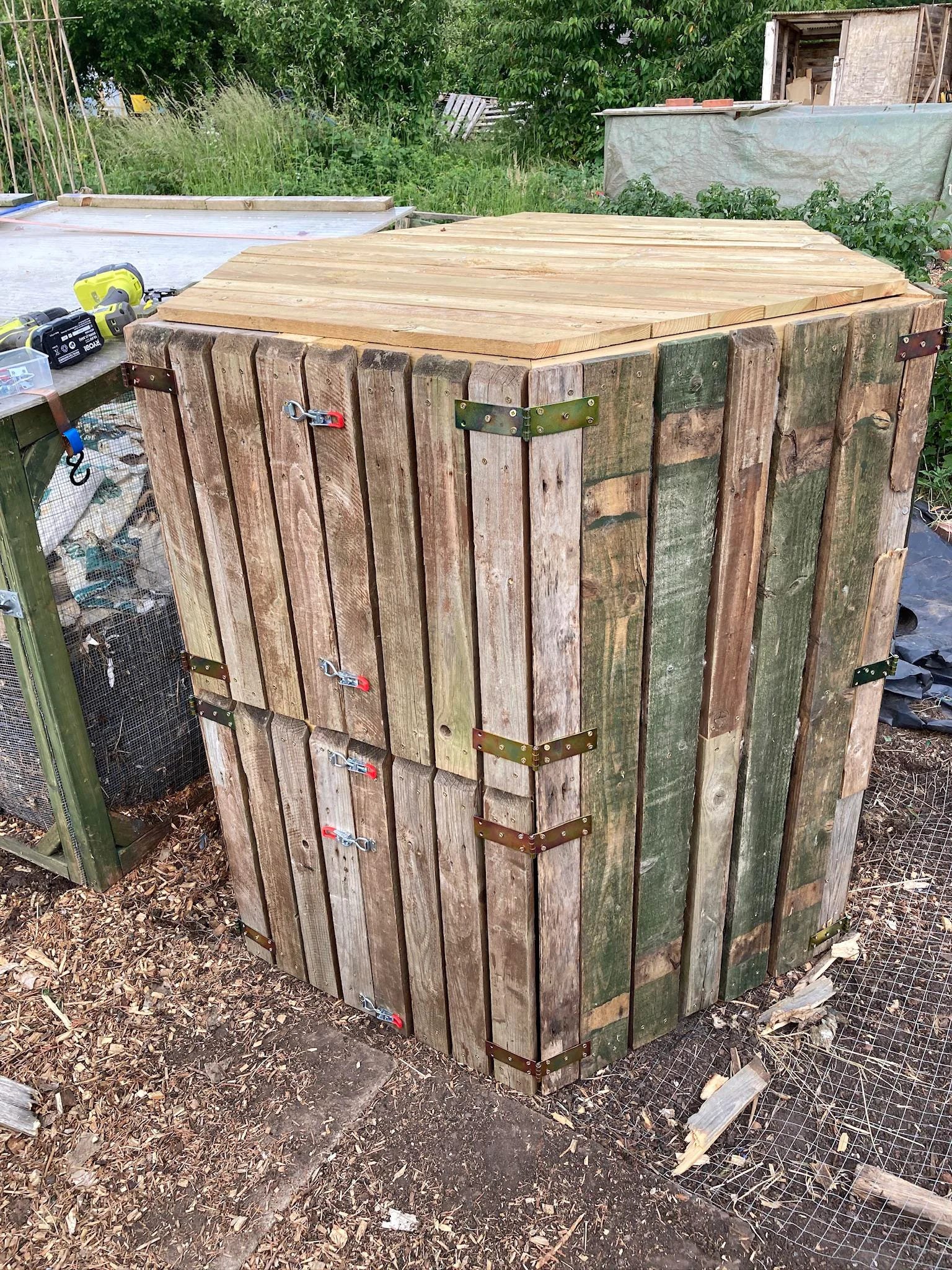
It attempts to solve a couple of issues I have with the square mesh bays you can see on the edge of the photo. The first is right-angle corners: a compost heap radiates from the centre like a sphere, so the corners always compost slower, if at all. Turing these into six 60° corners evens the edges out so they should compost at the same rate (at the cost of a bit of capacity).
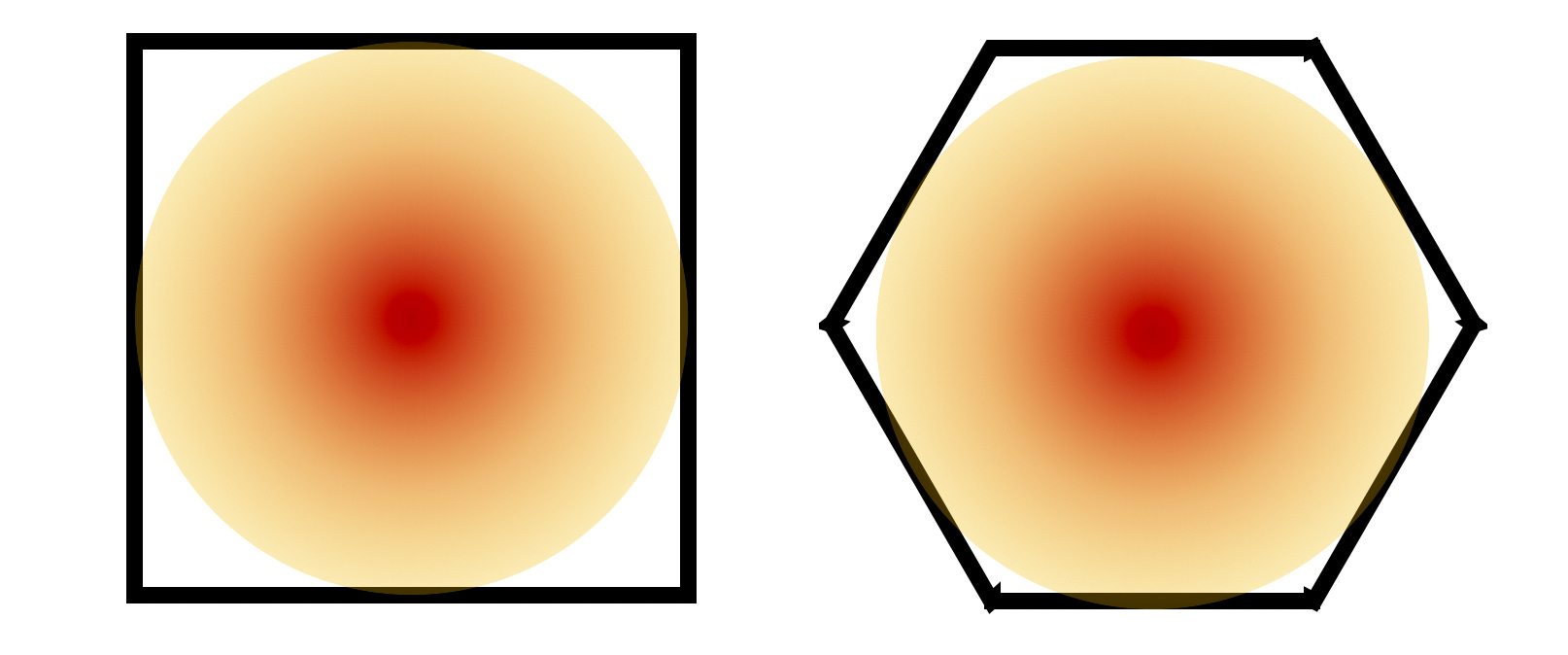
Secondly I created a void between the mesh and the slats which I ‘insulated’ with sheep wool. (This is commonly used as a packing material for chilled foodstuffs and I have a couple of sources, though you can also buy it as a garden mulch layer) I’ve found that wooden walls don’t allow air in and eventually rot, but mesh walls keep the first few centimetres of the heaps bone dry. I wanted to see if by replacing the edges with wool it would stay relatively dry while the stuff I wanted to compost would get on with it.
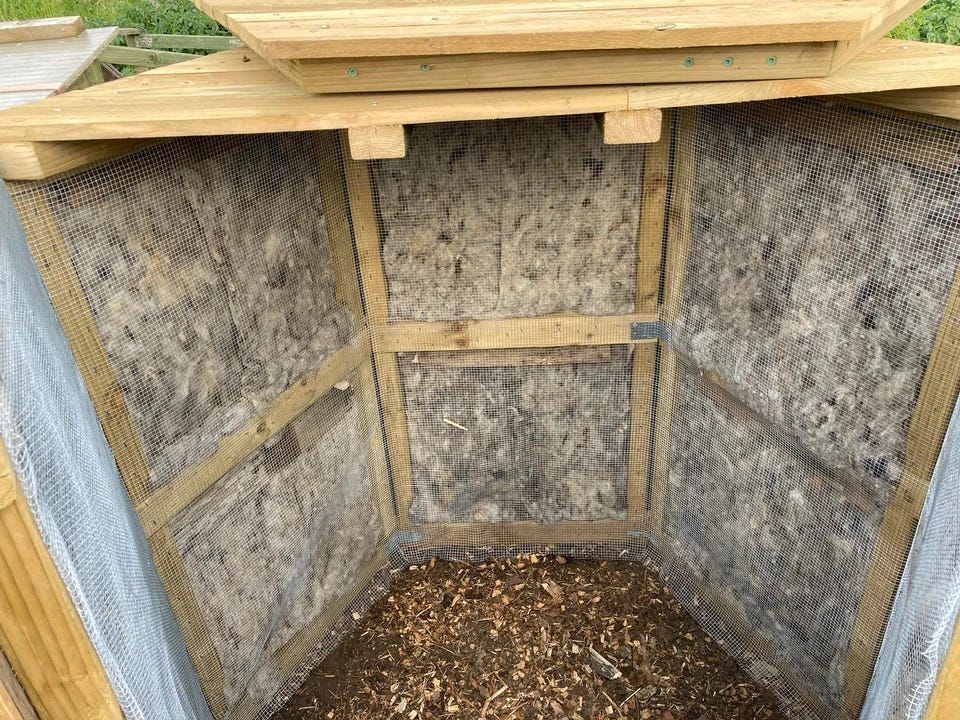
In short, it all kinda worked? I was pleased to see that aside from some tugging through the slats by rodents the wool was intact and mostly dry. Heat-wise, the rounder shape certainly did the business giving a much more even ‘bake’, but the summer sun dried out the south-facing side meaning when I came to turn it in August the left and middle was nice and dark while the right was barely touched. Still, that’s a positioning problem which shouldn’t be an issue now we’re moving into winter. Next spring I’ll move it or build a shade.
You’ll notice it has doors with latches which means I can open it without a power drill, bringing us back to the beginning of this digression. I opened it up and forked everything into a couple of rubble sacks as a stop-gap until I empty the middle bay. It was wetter than I would have liked, probably due to my over-watering after the heatwave, but otherwise nicely done with very few patches of raw hay or card. Definitely ready for the cool resting period, and in only two months.
This freed up the hexagon for all the new material and I pretty much filled it half way. The green:brown ratio is a bit heavy on the green, thanks to the communal wood chip heap being mostly leaves at the moment, but I can fix that later if it’s a problem. I also stuck a spare pipe vertically from the middle of the heap to the lid, as an experiment.
Right, let’s see what interesting links I’ve been saving over the last fortnight.
Video
I find “how I make compost” videos fascinating because I always disagree with something in them. This is a good thing as I’m either wrong, in which case I’ve learned something, or I’m right so can feel smug. And of course there’s no right way to make compost - just different ways.
This is overall a really interesting video and I’d like to dig deeper into his lactobacillus bacteria brewing and figure out what he means by “anaerobic” in this context. But to get the niggles out of the way, he’s not making “garden soil” – it’s a soil amendment. And he’s barely made compost in that time – it’s more of a mulch which will need a while to mature before it’s ready to put seeds in. And that’s fine! Because Fiona (my signifiant other) has no-dig beds, so I can give her fairly raw compost to spread on the top so the worms pull it into the soil.
What is interesting though is the 21-day thing, which is of course perfectly doable. The reason my heaps take nearly a year to be ready is because I barely turn them in that time. If I was out there every other day then I could speed that right up, but I’m not, and even when I am my time is mostly spent mulching and feeding the heaps. But turning is very useful, if you have the time and energy.
Turning mixes everything up so it composts evenly. But more critically it aerates the heap, giving the bacteria plenty of oxygen which speeds up their work. If you can’t turn then there are other ways to get oxygen in there. You could push air through the pile, also known as an Aerated Static Pile which I’m approximating with my perforated pipes (see the first issue).
But ultimately, I don’t need compost in 21 days. With my current inputs I can probably fill four bays a year, so there’s no rush. In the future though…
Cats on compost heaps

In what I hope will be a occasional series, here’s my neighbour Charlie looking startled.
Compost heaps are warm and attract mice so of course cats can be found on them! If you find a cat on your compost heap, send it my way!
Timelapse
As someone who used to teach photography and make art with cameras I’m constantly thinking about how to visually document the composting process, given it’s a) not very pretty and b) incredibly slow. Today I propped my phone pointing down into the hexagon bay and recorded a timelapse of me emptying it. It’s not that great, until you notice all the bugs finding themselves suddenly exposed to the light and desperate to escape, which probably wouldn’t be so obvious at normal speed.
Soil as metaphor
301 Permanently Moved is Jay Springett’s weekly... address, I guess? It’s a short five minute (301 seconds) audio/video lecture which he also posts the transcript of. Anyway, when he posted one titled Tend Soil it caught my attention, because I’m always looking out for people who aren’t deep into the whole permaculture thing using these sorts of analogies (although to be fair he’s a big solarpunk advocate).
Here’s Jay sketching out a manifesto for creating a sustainable base and sanctuary for the online artist.
Before the Artist can lay the first stone or plant the first seed in their garden, or write the first line of their diary, they must engage in a ritual as old as creativity itself: they must first – Tend Soil. This soil is not just physical terrain; it’s the preparatory work that creates the landscape of imagination. Makes it fertile where future work will take root. It is the tableau upon which dreams are sketched, the medium that accepts seeds willingly and provides them nourishment.
The initial act of tending is a foundational one. To tend, is to attend. In the digital realm where screens can become stages, canvases, and even windows to new worlds, the Artist requires a solid, secure platform from which to work. The soil of the Artist’s sanctuary is more than a backdrop; it’s the structural underpinning for all that comes next.
To cultivate this domain—to bring in nutrients, water, and elements of inspiration—is an act of sovereignty. Treat this soil as a partner. The Artist also stakes their claim not just upon the surface of their island, but to the data that flows from it. Assert ownership, not only of the ground itself but of the data that populates it.
Nice. Listen / watch / read the whole thing here.
That’ll do for this issue, I reckon. Next time I might write about Hugelculture, since there’s a few links sitting in my notes and it’s such a great word. Or I might not!
If you have come across anything interesting to do with composting, send it to info@aerobicdigest.email or @ me on Mastodon where I keep tabs on the #compost tag.
See you in a period of time somewhere between a week and a month!
Pete Ashton